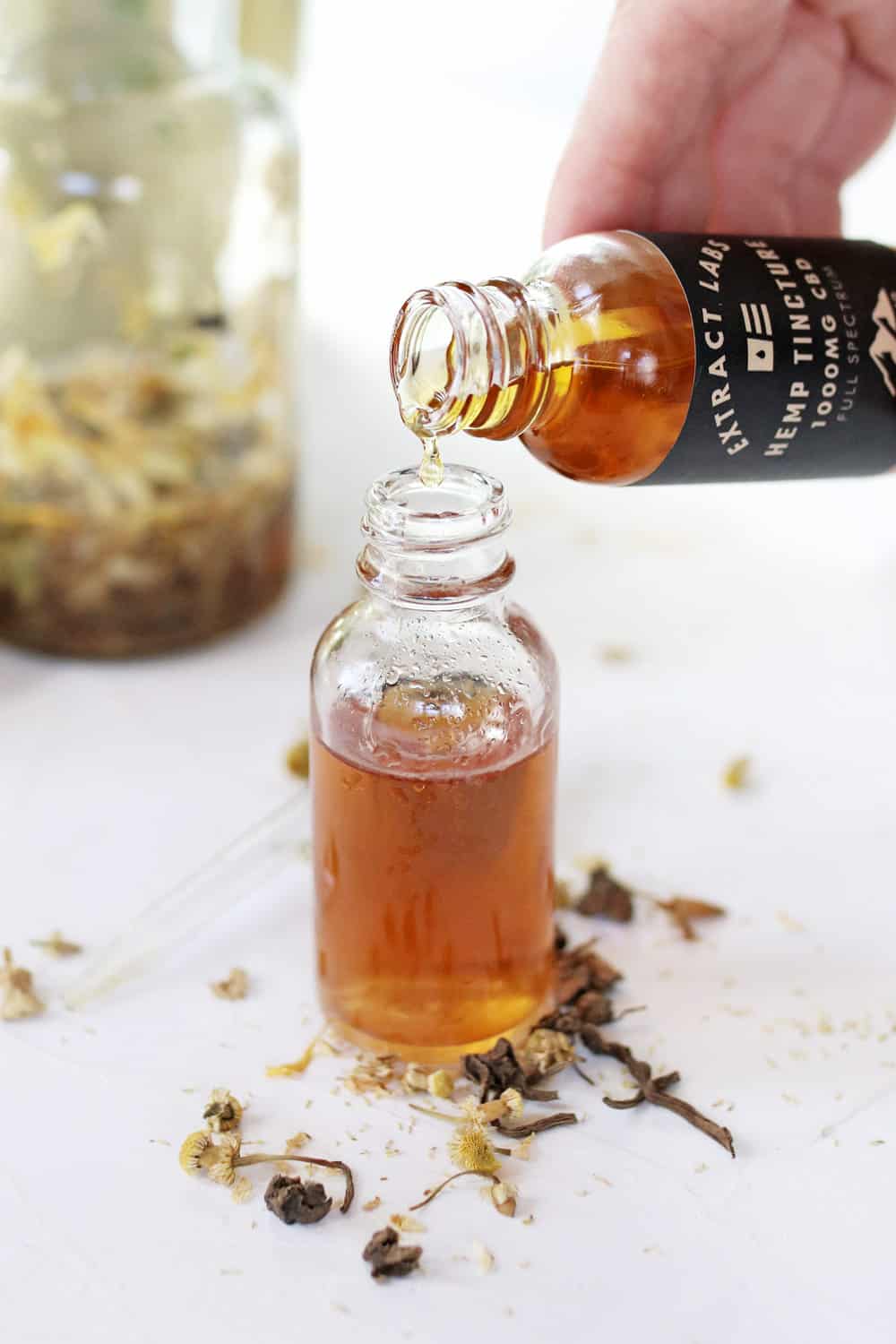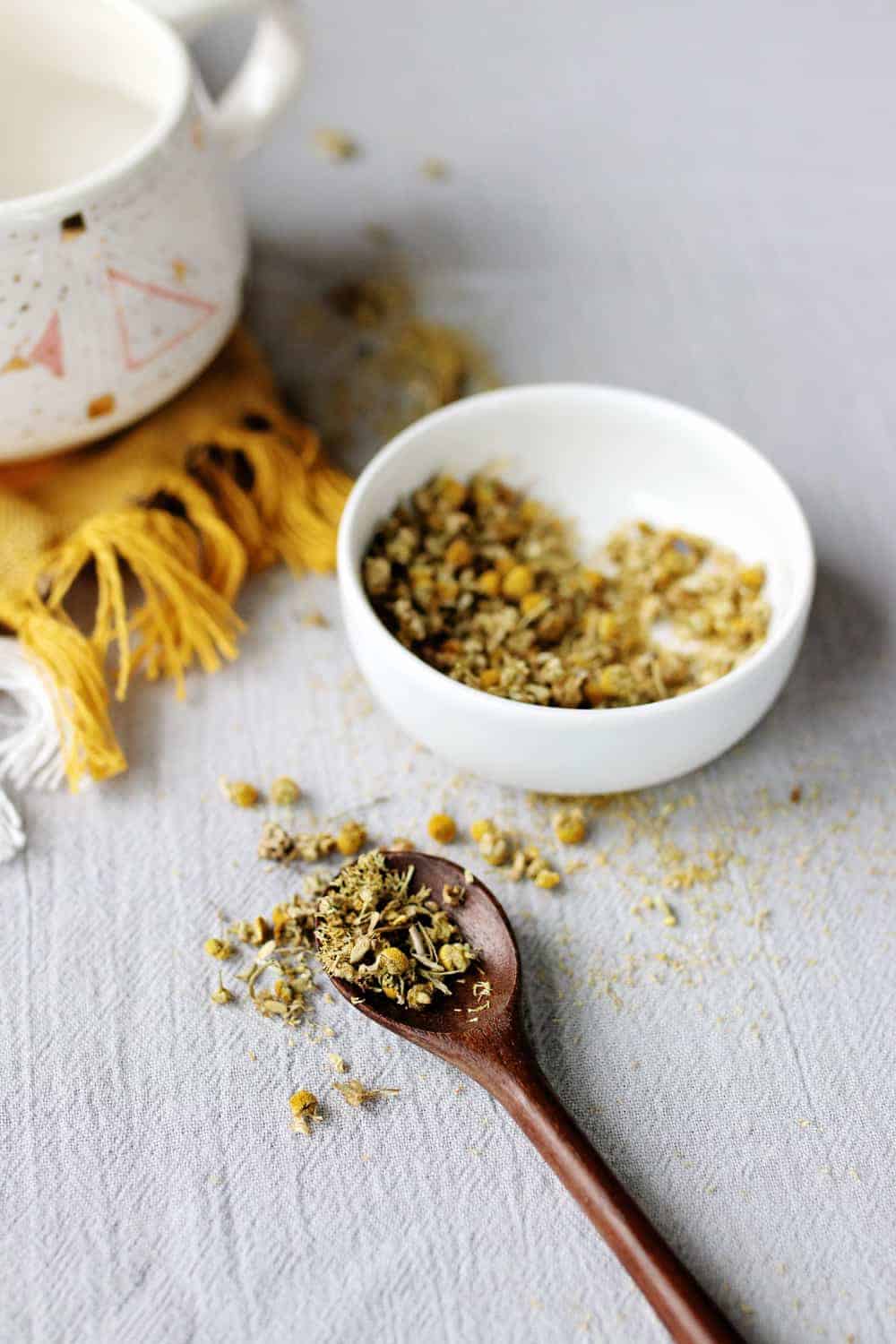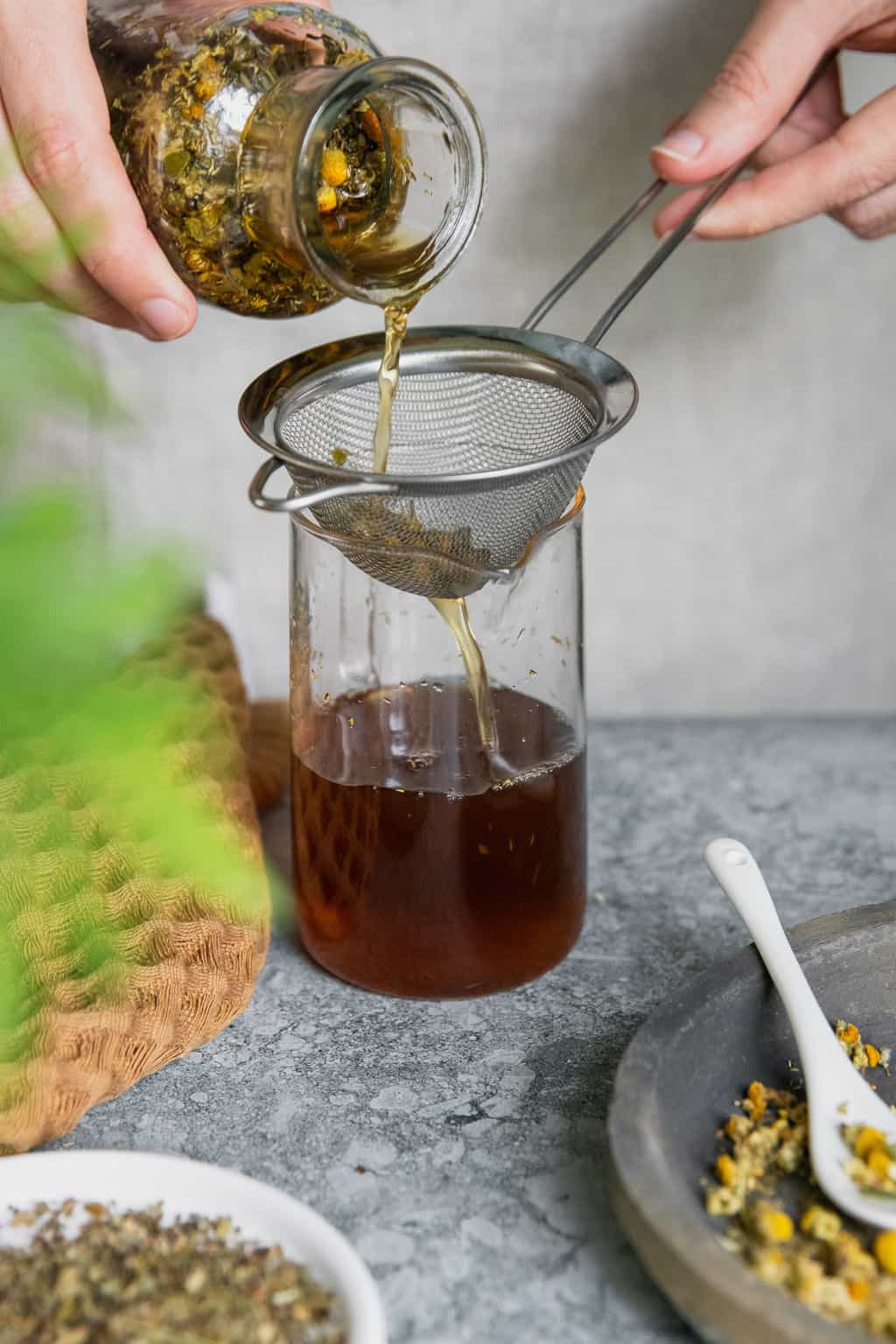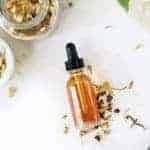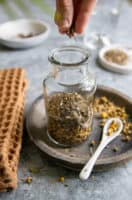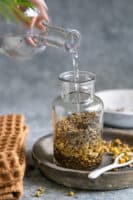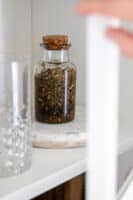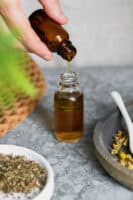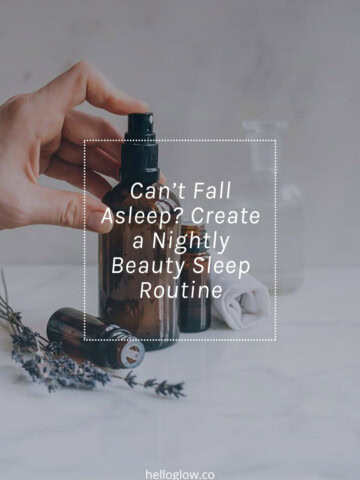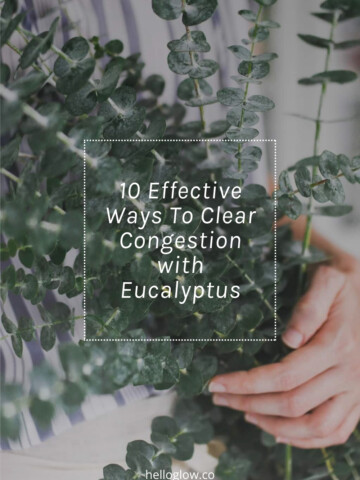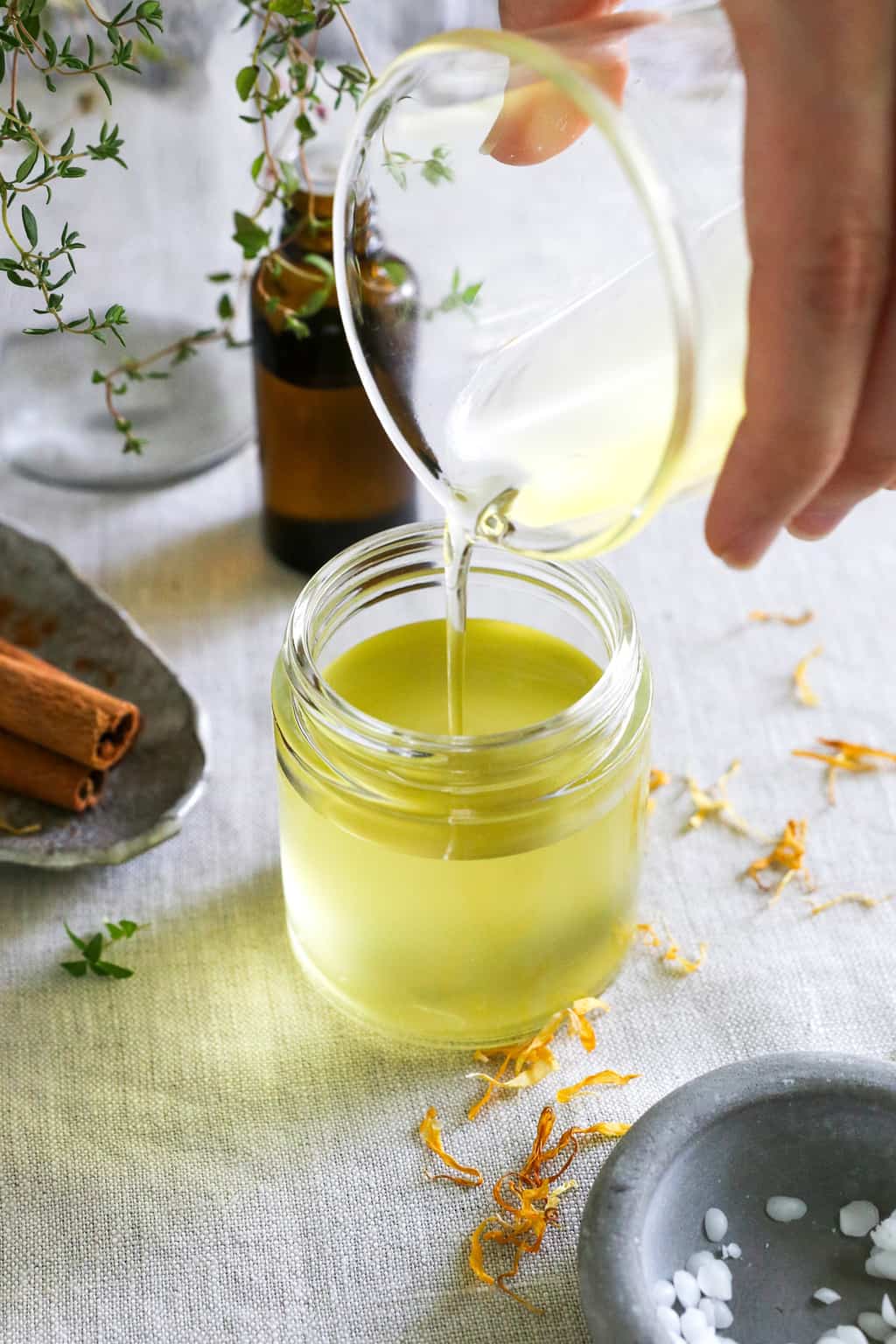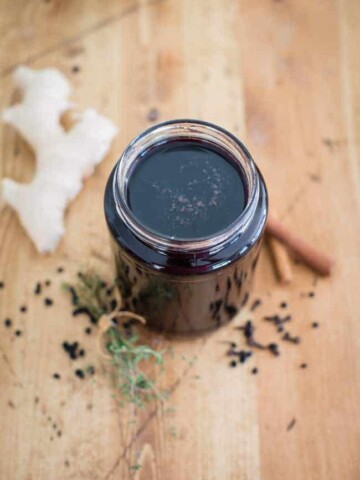No matter how hard we try, sometimes it seems like stress is just part of this modern, tech-filled age. I was shocked a few years ago when my doctor looked at my chart and told me I was stressed. She didn’t even pose it as a question—more like a statement of fact. And it struck me as odd because I didn’t feel stressed. I felt great!!!—with exclamation points and all. But behind the scenes, my body was stressed just the same.
It’s not always enough to relax, work out, be mindful, and meditate. Sometimes your body needs a little extra help when it comes to shutting off the stress response and adapting to hectic situations—and herbs are great at doing just that.
This relaxing tincture uses lemon balm, valerian, and CBD oil to help you release tension and better manage stress. Use it to calm you in a stressful moment or as a daily supplement to help support and improve your body’s stress response over time.
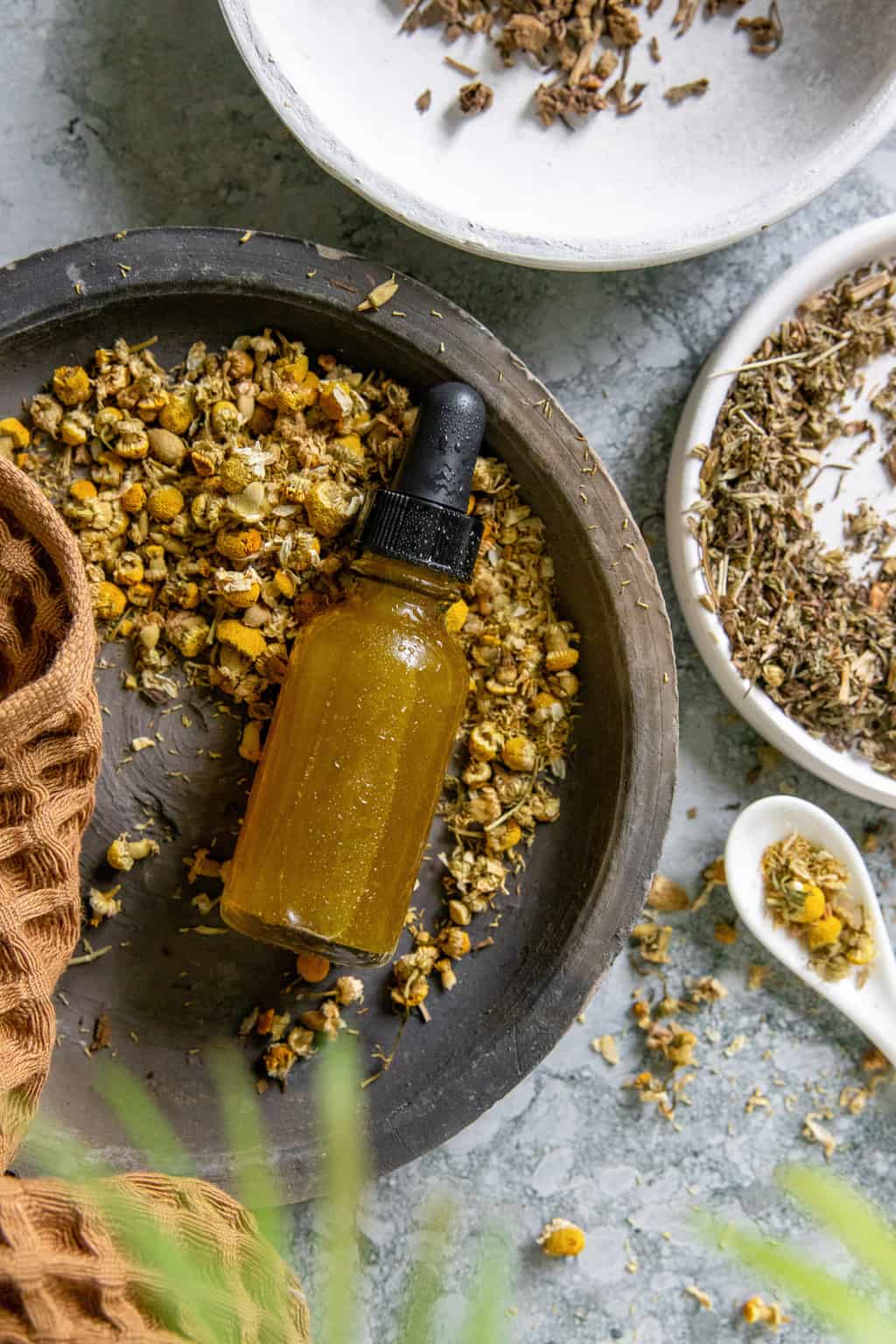
How To Make a Relaxing CBD Tincture
The nervous system is said to be the major communication pathway in the human body. Because it plays such a major role in bodily processes, it’s hypothesized that many health disorders are somehow involved with the nervous system. And if you take it a step further, that means most diseases may have a stress component as well.
Herbal remedies have been used for stress and anxiety for centuries, but scientific research is finally catching up to what folklore has said all along: herbs work. And a number of them are said to help relieve stress and anxiety. Some work gently, like lavender and chamomile, while others have more potent sedative effects, like valerian and kava.
Why Combine CBD with Herbs?
It’s true that CBD can soothe stress without the help of other herbs. But CBD works through the body’s endocannabinoid system [source], while herbal adaptogens work through the body’s adrenal system [source]. When used together, it’s thought that they can boost your body’s stress-busting ability and lead to a deeper level of calm.
CBD + Herbal Tincture
This CBD tincture uses powerful nervines, which are herbs that help strengthen and support the nervous system. They buffer and lessen the effects of stress, both in the moment and cumulatively over time.
Chamomile
Chamomile is one of my favorite calming herbs because of its subtle taste (at least as far as herbs go!), which makes it great for teas and tinctures. It is a naturally soothing, anti-inflammatory herb that relaxes nerves, promotes sleep, and reduces pain. It also has long been claimed that it boosts the immune system [source].
Lemon balm
Used as a medicinal herb for hundreds of years, lemon balm has been shown to help improve mood and cognitive performance [source]. And some studies suggest that when combined with other calming herbs, lemon balm may help promote sleep [source].
Valerian
A flowering herb native to Europe and parts of Asia, valerian root is most commonly used for sleep disorders. While scientists aren’t sure exactly how it works, some believe that valerian may increase GABA, a neurotransmitter in the brain that regulates nerve cells and has a calming effect on the body [source].
CBD
Cannabidiol, or CBD for short, is an extract made from hemp plants. The exact way CBD affects stress isn’t fully understood. However, it’s thought to alter serotonin signals in the brain, which in turn reduce anxiety and depression. CBD has been shown to reduce stress and improve physiological symptoms of anxiety (like increased heart rate) in animal studies [source].
Other Calming Herbs
I chose each of the herbs in this CBD tincture based on their history of use, the research supporting their benefits, and my personal experience. But you don’t have to use the same herbs I do. Other calming herbs include [source]:
When it comes to herbs, you should do your own research and choose ones that work best with your body and health conditions.
Relaxing Herbal Tincture Ingredients
—1 part chamomile flowers
—1 part lemon balm
—1 part valerian root
—Vodka or rum
—CBD oil
Tools
—Cheesecloth
—One 8-ounce glass jar with lid
—One 8-ounce glass jar with lid
Step-by-Step Relaxing Tincture Instructions
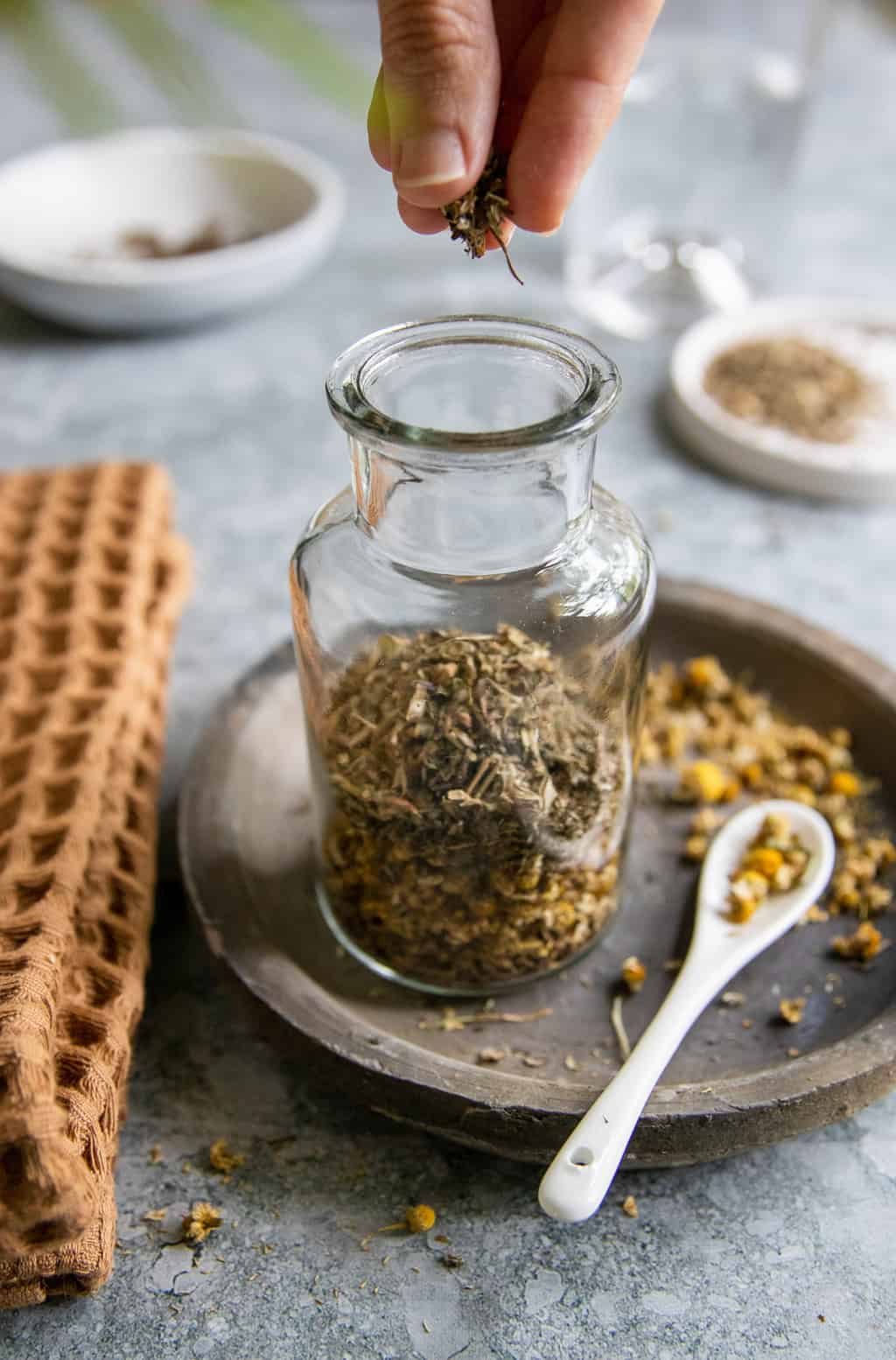
Step 1 | Add herbs to jar
Fill an 8-ounce glass jar half way with a 1:1:1 ratio of dried chamomile, lemon balm, and valerian root. Rather than using specific amounts of dried herbs, I typically just eyeball the ratio so I can make as little or as much as I like.
To do this, fill your jar halfway with 1 part chamomile, 1 part lemon balm, and 1 part valerian. It doesn’t have to be exact!
Step 2 | Add alcohol
Fill the jar the rest of the way with vodka or rum. Do not use rubbing alcohol or non-consumable alcohol unless you plan to use this topically. Put the lid on and shake well.
Step 3 | Wait
Store in a cool, dry place away from direct sunlight for 4 to 6 weeks, shaking every couple of days. It’s best to stop the steeping process somewhere between 4–6 weeks to prevent the herbs from releasing a sour, bitter flavor.
Step 4 | Strain
After 4–6 weeks, strain the tincture through cheesecloth or a fine-mesh strainer.
Step 5 | Add CBD
Transfer the tincture to a dropper bottle and add your CBD oil. Gently shake to combine. To use, shake well and place a few drops under the tongue whenever you’re feeling stressed. Your tincture should last a couple of years if stored in a cool, dry place.
Tips for Making and Using Tinctures
A tincture is an herbal extraction made from high-proof alcohol and dried herbs. Unlike teas, alcohol-based tinctures can be made from every part of the plant, including its leaves, roots, berries, and flowers. That means they contain more beneficial compounds than other forms of herbal medicine.
Use clean organic herbs. Never use herbs that have been treated with pesticides or that were found near commercial farms or close to the roadside.
Grind your herbs. To extract more beneficial compounds from the herbs, grind them using a mortar and pestle or coffee and spice grinder before making your tincture.
Use different extraction agents for different uses. When making a tincture for internal use, always use high-proof ethyl alcohol, such as vodka, gin, or rum. When making tinctures for external use only, you can use rubbing alcohol, witch hazel, or oil.
Store the tincture in amber bottles. Light can break down herbal extracts and weaken your tincture over time. For long-term storage, transfer your tincture to an amber glass dropper bottle and store in a cool, dry cabinet or drawer. When stored properly, tinctures can last for years.
Label your tincture. To be safe, always label your tincture with the herbs used and the date it was made.
Start slowly. Tinctures are incredibly powerful herbal remedies, so you may only need a few drops to see a noticeable benefit. When taking a new tincture, start slowly and stop if you notice any allergies, rashes, or gastrointestinal irritation.
Relaxation Tincture
Equipment
- One 8-ounce glass jar with lid
- Two 2-ounce glass dropper bottles
Materials
- 1 part chamomile (see notes for tips on measuring your herbs)
- 1 part lemon balm
- 1 part valerian root
- Vodka or rum (enough to fill the rest of the jar)
- Cheesecloth or mesh strainer
- 1–2 teaspoons CBD oil
Instructions
- Fill an 8-ounce glass jar half way with a 1:1:1 ratio of dried chamomile, lemon balm, and valerian root.
- Fill the jar the rest of the way with vodka or rum. Do not use rubbing alcohol or non-consumable alcohol unless you plan to use this topically. Put the lid on and shake well.
- Store in a cool, dry place away from direct sunlight for 4 to 6 weeks, shaking every couple of days.
- After 4–6 weeks, strain the tincture through cheesecloth or a fine-mesh strainer.
- Transfer the tincture to a dropper bottle and add your CBD oil. Gently shake to combine.
Video
Notes
This article was medically reviewed by Dr. Gina Jansheski, a licensed, board-certified physician with over 20 years of experience in practice. Learn more about Hello Glow’s medical reviewers here. As always, this is not personal medical advice, and we recommend that you talk with your doctor before using this recipe to determine what’s best for you.
99
